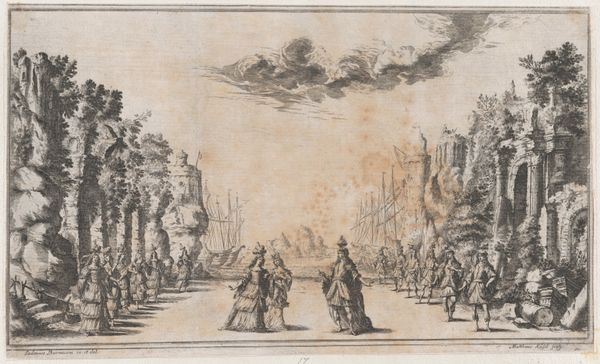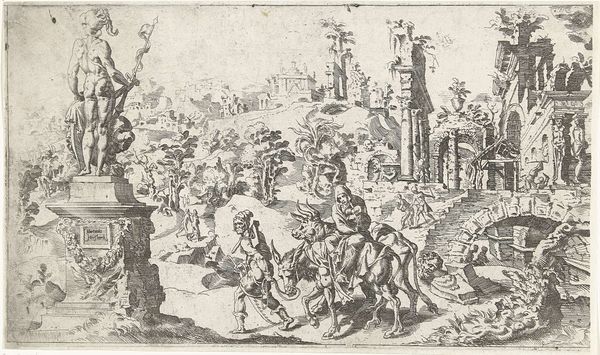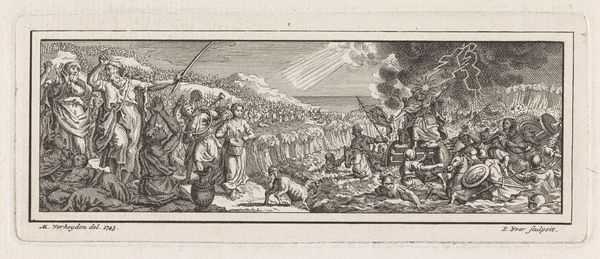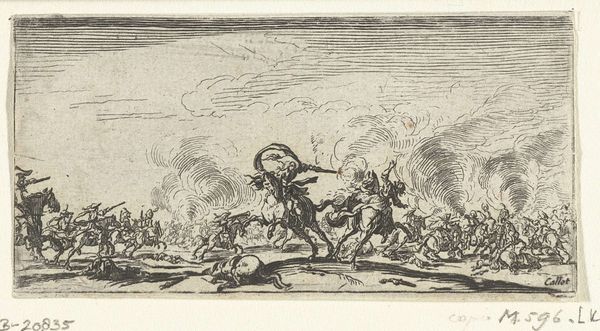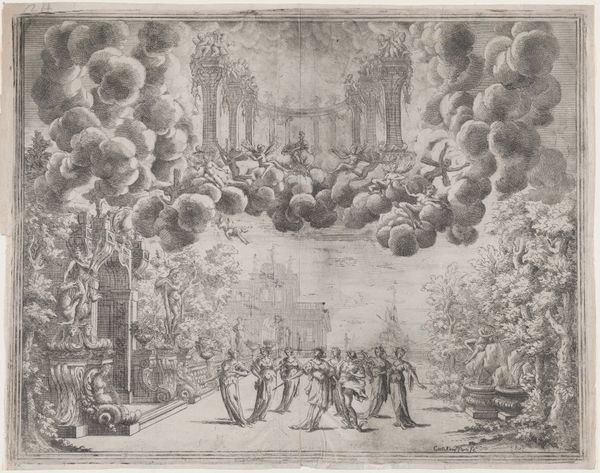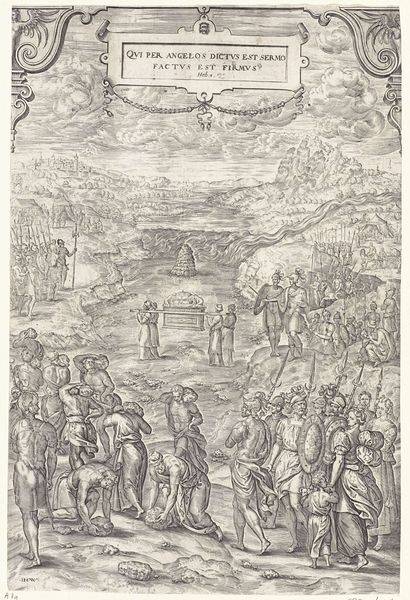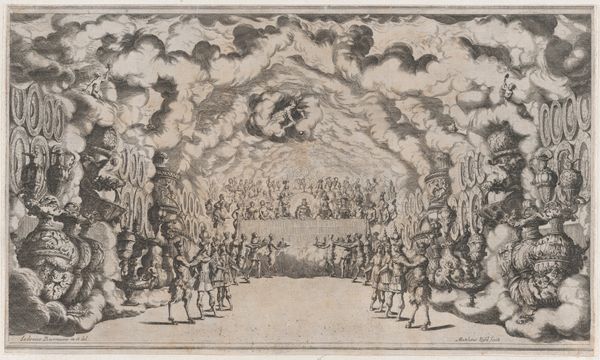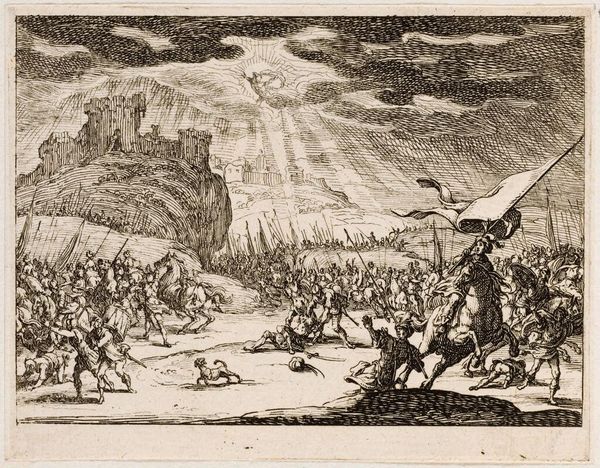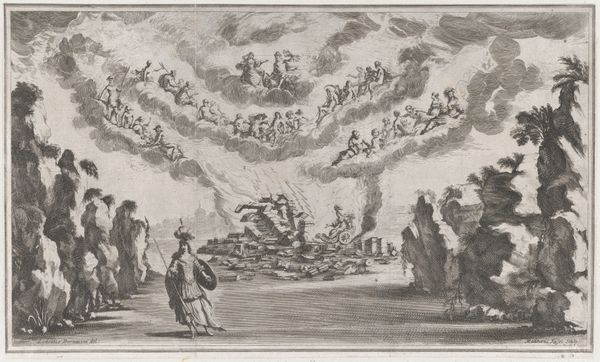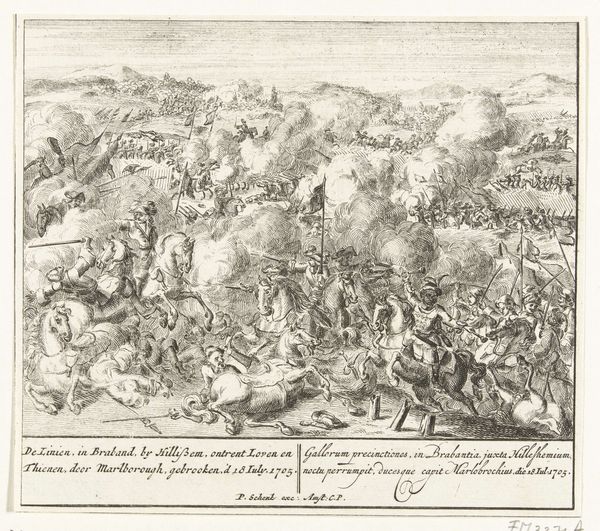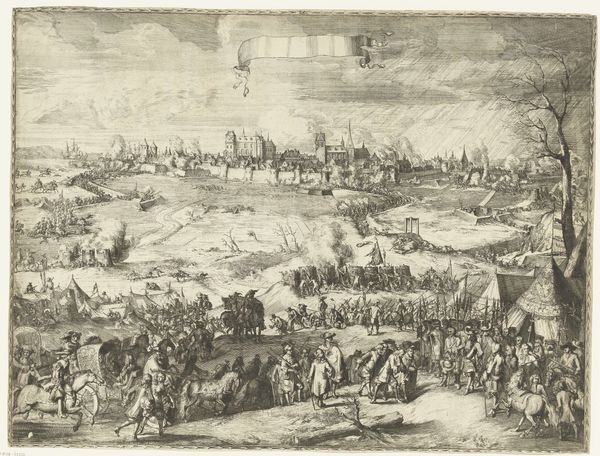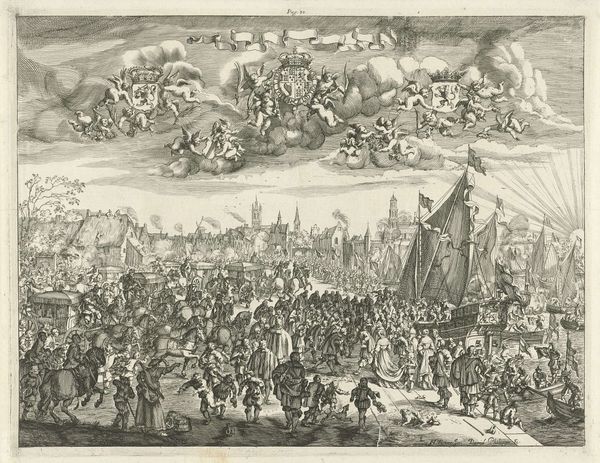
drawing, pen, engraving
#
drawing
#
baroque
#
pen drawing
#
pen sketch
#
figuration
#
line
#
pen
#
history-painting
#
engraving
Dimensions: height 145 mm, width 235 mm
Copyright: Rijks Museum: Open Domain
Curator: Jan van Ossenbeeck created this drawing, "The Cloud Palace of Time," sometime between 1663 and 1674. He worked in pen and engraving techniques to capture a rather unusual scene. What strikes you first? Editor: A whirlwind! Or, better yet, a fugue. A sense of organized chaos conveyed through this dance-like composition on the lower plane, set against a receding architectural dreamscape of temples wreathed in what appear to be gigantic puffed clouds. Curator: The clouds definitely command attention. In a Baroque piece, clouds weren't merely meteorological phenomena; they often signified the ephemeral nature of earthly existence. Paired with figures that appear to be celebrating time and abundance, it might reference specific cultural memories. Editor: Abundance and time, but what is most obvious is the line! Ossenbeeck emphasizes this structural element, organizing the figures along very simple receding horizontals. But consider the way the hatch marks give dimension to the clouds, creating pockets of shadow and lightness! Curator: Indeed. Speaking of figures, each of the dancers here strikes a stylized pose, suggesting perhaps a classical or theatrical allusion. Their dance, captured in swirling lines, reminds me of cyclical rituals performed during specific festivities, almost like pagan rites adapted through the Baroque sensibility. Editor: That very tension between pagan ritual and controlled Baroque expression fascinates. But I also see something a bit less metaphorical at play. Those temples, while heavenly, are still precise architectural structures, anchoring the chaos with rationality. A dialectic emerges from what could otherwise just dissolve into pure ether. Curator: It reflects a very Humanist vision doesn't it? Reconciling transient, emotional exuberance with formal discipline, so it mirrors the complexities within our own souls and also the paradoxes inherent to life. A truly sublime reminder that moments of gaiety also have a fleeting quality, not to be taken for granted. Editor: Very true. Perhaps van Ossenbeeck captures, with only ink and paper, that ephemeral and profound connection we have with Time itself. Thank you for shedding more light onto these powerful cultural allusions.
Comments
No comments
Be the first to comment and join the conversation on the ultimate creative platform.
